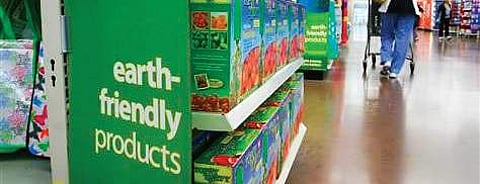

Conscious Living is the need of the hour and there is nothing more inspiring than events that bring to fore all aspects of it under one roof. Besides being a fun day out with several ways to gain insights into the sustainable lifestyle aspects, the recently concluded Earth Fest brought the best of eco-friendly living ideas to Singapore in its second year. Featuring several NGO’s and organizations, the festival brought together fun and education under its format — Earth Carnival — to promote awareness of living sustainably. Topics covered included conservation, waste management, animal welfare and resource management, but the focus of the ‘edutainment’ was on ‘Buying Habits’.
It is true that an informed consumer is one who demands a certain level of stringency in any product that he buys. It is these demands that drive industries towards more sustainable products and processes. Then comes the next question while dealing with consumer behaviour and sustainability –— what are the top buying habits of a sustainable buyer? As an architect of ‘green buildings’, I understand the value of certification. The demand for environmentally sensitive buildings skyrocketed after there was a label put on it and a building was declared Silver, Gold or Platinum. The same maybe said of rating agencies, whose certificates and third party labels assess and certify products. They go a long way to assure people that such products come from sustainable roots. These labels vary across industries, whether it is food, textile, cosmetics and so on; and some labels are more credible than others. So it does require some further education to tell the genuine ones from the rest.
Speaking of labels, the one label that does jump out almost immediately is the one that talks about the recyclability of the packaging. All of us are familiar with the recycle sign or have at least seen some indications on products we buy from stores regarding recycling or disposal. While packaging that comes from a recognised renewable resource (wood, paper, cardboard) is often seen as being more sustainable, it’s important to remember that the overall sustainability quotient is more about the product inside the packaging. So when making a purchase, do not confuse eco-friendly packaging with an eco-friendly product!
While making a sustainable buy, we tend to consider other factors as well, say as in eco-fashion. Style, quality and cost are eclipsed by ethical supply chains or responsible sourcing of fabrics. Unfortunately, in today’s scenario conventional products are often cheaper and could still appear very attractive, thereby affecting the final decision of someone on the verge of an earth-friendly vs. Pocket-friendly decision! The benefits of this choice has to be genuinely communicated to enable an emotional connect and discerning buying habits.
The long-term vision is to make sustainability the norm for making choices. Until then the public has a massive role in sending clear messages to companies as to where they spend their money. Let us strive to be those conscious people that drive the next generation of products to be more holistic!